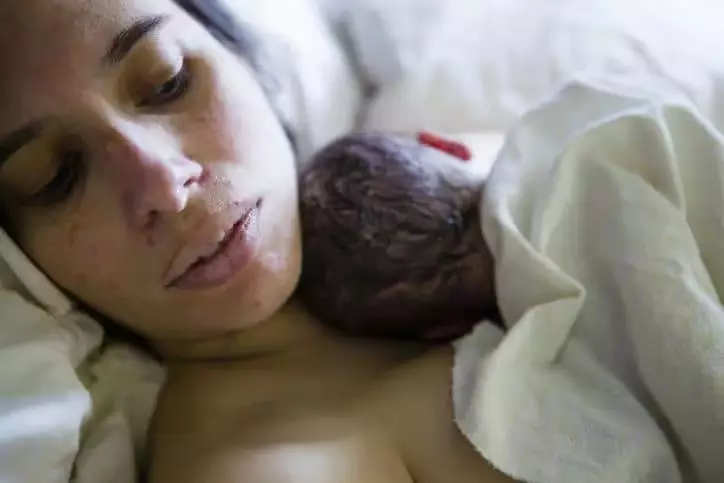Welcoming a new life into the world is often painted as a picturesque moment full of joy and love, yet behind the scenes, the realities of childbirth can be much more jarring. One aspect that is frequently overlooked and rarely discussed is the phenomenon of postpartum shaking—a confusing experience many new parents endure after labor. While it may seem alarming, understanding its causes and context can alleviate anxiety and foster a more empowered experience in the postpartum period.
The Unspoken Reality of Postpartum Shaking
For many new parents, especially first-timers, the physical sensations after giving birth can be baffling. Imagine just having completed one of the most strenuous physical feats of your life, only to find your body trembling uncontrollably. This shaking, often likened to the body’s response to extreme cold, can trigger panic, making parents question their health and the well-being of their newborn. Astonishingly, research indicates that a significant majority—between 44% and 55%—of people may experience this reaction. The absence of adequate discourse around this topic can leave many feeling isolated and bewildered.
The Science Behind the Shakes
The reasons behind postpartum shaking are multifaceted yet not entirely clear-cut. Primarily, hormones play an essential role during this delicate phase. As cortisol and adrenaline surge during labor, they affect multiple physiological processes, including muscle contractions that can lead to involuntary shaking. The release of oxytocin, while beneficial for uterine contractions and bonding with the infant, can also set off muscle involuntarily spasms throughout the body. The facts and figures speak for themselves: this is not an uncommon side effect.
Moreover, imagine your body going through a significant thermal change. During labor, your core temperature might rise, only to drop upon delivery, which can trigger shivering as a form of temperature regulation. This response can occur regardless of the room temperature—your body has its intricate rhythm that may misfire during and after such a transformative experience.
The Role of Anesthesia and Recovery
Additionally, for those who undergo a cesarean section, anesthesia might hinder the body’s natural temperature regulation. Epidurals, while invaluable for pain management, can affect blood circulation, leading to an increased heat loss from the body. It becomes crucial to understand that this response, albeit alarming, is typically non-threatening and part of your body’s recuperative efforts. The nervous system’s puzzling behavior during this critical interval should not be met with skepticism but rather an understanding that your body is fighting hard to heal.
Managing the Physical Response
Should trembling commence post-delivery, resting and accepting this physical response can aid recovery. Medical professionals often provide warm blankets to soothe the body, which can offer immense comfort. Recent studies even suggest that warming IV fluids before they enter your body can decrease shivering intensity, highlighting a fascinating intersection of science and comfort in maternal care. It reveals a proactive approach healthcare teams are now embracing in postpartum settings.
When to Seek Medical Advice
While understanding your body’s natural reactions can alleviate some concerns, it remains imperative to be vigilant regarding other symptoms. If postpartum shaking is accompanied by persistent chills similar to those experienced during illness, it can signify a fever or potential infection. Under such circumstances, it’s not just advisable but essential to reach out to your healthcare provider. Knowledge of your own body’s signals can empower you as you navigate this complex experience.
The journey of parenthood is often filled with unexpected challenges, and postpartum shaking is just one of many hurdles new parents may face. By demystifying this reaction, the aim should be to illuminate the path toward understanding what happens to your body and when to seek help, transforming anxiety into resilience. Embrace the voyage; while the symptoms might be startling, they are just one part of a much larger, beautifully chaotic tapestry of bringing a new life into the world.

